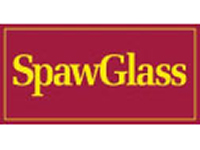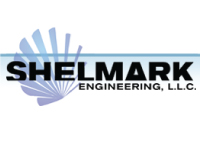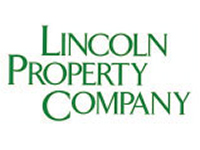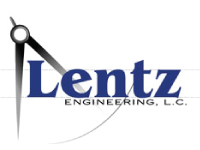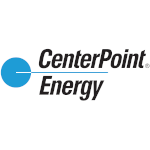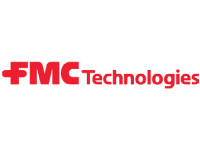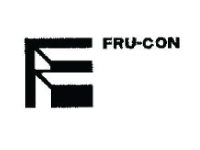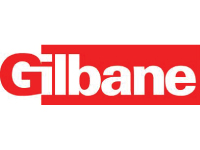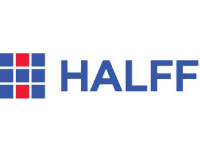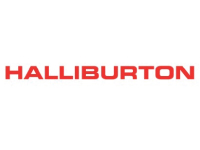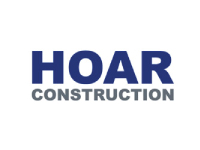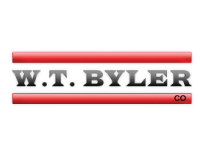Kolbe Farms
The LID solution nearly eliminated the need for a detention pond altogether and in the process gained three additional lots, or 15% more homes.
...At two to three times the cost of traditional pavements, many immediately think that this drainage option is out of line economically with conventional design. At Construction EcoServices, we constantly challenge conventional thinking by using non-conventional methods. The same goes with permeable pavements. The objective with a permeable pavement system is to function as an inlet to filter water and distribute it into a subsurface storage system below. This rock bed slows the flow of water, extends the time of concentration, provides detention storage, and allows the water to contact the native soils, reducing the volume that leaves the site. This allows us to meet both water quality, detention and retention requirements on site, eliminating the need for catch basins, pipes, detention ponds and stormwater quality treatment devices. When you look at the total cost of a parking lot with a conventional storm sewer and compare it to a permeable pavement design, you might be surprised at the result.
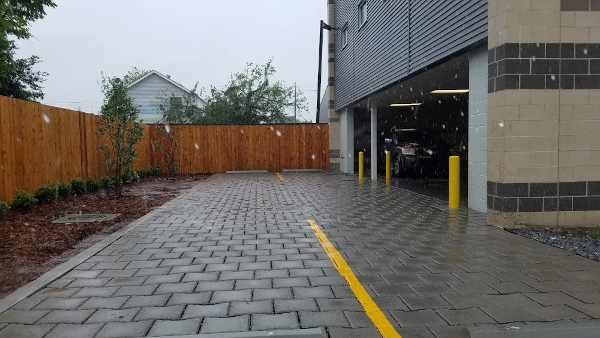

“I design with the end in mind when choosing the right system for clients which means I want to be able to guarantee the maintainability of a product. PowerBlock is easy to install, easy to maintain and provides a unique, aesthetic appeal while managing stormwater for any site.”
– Chelsea Bates
Senior Project Manager, Stormwater Systems
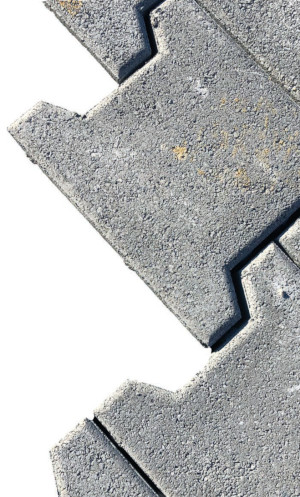 A Low Impact Approach to Improved Management of Stormwater Runoff and Pollutant Control
A Low Impact Approach to Improved Management of Stormwater Runoff and Pollutant ControlUse of Open Joint Permeable Pavers is a recognized Best Management Practice by the U.S. Environmental Protection Agency (EPA), providing both pollution control and stormwater management. Extreme weather produces extreme rainfall. The result has been increased regulations as well as an increase in the size and expense of each property’s necessary stormwater management system. Permeable open jointed paver systems help retain stormwater on site, where the water falls, thereby allowing property owners to achieve pre-development stormwater goals with smaller capacity stormwater systems. Further, permeable open jointed pavers have the quickest return on investment and the lowest cost of ownership of any permeable pavement system. For these reasons, permeable open jointed pavers are a key component to Construction EcoServices stormwater solutions.
Ideal Uses:
Advantages of Use:
Give Your Pavement Power Over The Rain
When installing a permeable open jointed pavement system, use a system that solves more problems than it creates! Introducing PowerBLOCK, a high-performance permeable paving system. With surface infiltration rates of over 1,000 inches per hour, it performs 5x better than most other systems. And while all pervious pavements require maintenance, PowerBLOCK still flows at 100 inches per hour when 90% clogged, which is where most competing systems start. That means less time cleaning your pavement and more time actually using it!
In addition, we have found PowerBLOCK manufacturing provides a consistently high-quality product and inventory.
The LID solution nearly eliminated the need for a detention pond altogether and in the process gained three additional lots, or 15% more homes.
...The civil engineers were tasked with managing and treating 1,000 cubic feet of stormwater runoff within a 1,200 square foot area, most of which is a parking surface.
...Working with Construction EcoServices, the engineers at EHRA, Inc. rescued this project using Low Impact Development (LID).
...Located outside of the City of Houston in Fort Bend County, the single-family residential project known as Camellia is a great example of how Stormwater Multifunctional Design can benefit the community,...
Within the swales are a series of forebays that pond stormwater behind earthen berms, at the bottoms of which are 10” pipes that allow low flows through and extend time of concentration for larger...
Within the swales are a series of forebays that pond stormwater behind earthen berms, at the bottoms of which are 10” pipes that allow low flows through and extend time of concentration for larger...
How did PowerBlock serve the function of a detention pond, drainage inlet and a water quality unit on this project?
...The engineers were able to take advantage of using Harris County’s Low Impact Development (LID) regulations by increasing the time of concentration of storm water on this site.
...The LID solution nearly eliminated the need for a detention pond altogether and in the process gained three additional lots, or 15% more homes.
...The civil engineers were tasked with managing and treating 1,000 cubic feet of stormwater runoff within a 1,200 square foot area, most of which is a parking surface.
...Working with Construction EcoServices, the engineers at EHRA, Inc. rescued this project using Low Impact Development (LID).
...Located outside of the City of Houston in Fort Bend County, the single-family residential project known as Camellia is a great example of how Stormwater Multifunctional Design can benefit the community,...
Within the swales are a series of forebays that pond stormwater behind earthen berms, at the bottoms of which are 10” pipes that allow low flows through and extend time of concentration for larger...
Within the swales are a series of forebays that pond stormwater behind earthen berms, at the bottoms of which are 10” pipes that allow low flows through and extend time of concentration for larger...
How did PowerBlock serve the function of a detention pond, drainage inlet and a water quality unit on this project?
...The engineers were able to take advantage of using Harris County’s Low Impact Development (LID) regulations by increasing the time of concentration of storm water on this site.
...Grass Cell allows occasional use impervious pavements to be converted to pervious and drivable grass surfaces with a runoff reduction of up to 90%.
The cellular system is ideal for use with warm season grasses, as it doesn’t utilize solid vertical walls to support surface loads, but has lateral openings. Rhizomes and stolons use these openings to proliferate within the uncompacted soils within the structure, creating a self-healing turf.
The Grass Cell system is often used into prevent turf damage in traffic applications such as:

The LID solution nearly eliminated the need for a detention pond altogether and in the process gained three additional lots, or 15% more homes.
...The civil engineers were tasked with managing and treating 1,000 cubic feet of stormwater runoff within a 1,200 square foot area, most of which is a parking surface.
...Working with Construction EcoServices, the engineers at EHRA, Inc. rescued this project using Low Impact Development (LID).
...Located outside of the City of Houston in Fort Bend County, the single-family residential project known as Camellia is a great example of how Stormwater Multifunctional Design can benefit the community,...
Within the swales are a series of forebays that pond stormwater behind earthen berms, at the bottoms of which are 10” pipes that allow low flows through and extend time of concentration for larger...
Within the swales are a series of forebays that pond stormwater behind earthen berms, at the bottoms of which are 10” pipes that allow low flows through and extend time of concentration for larger...
How did PowerBlock serve the function of a detention pond, drainage inlet and a water quality unit on this project?
...The engineers were able to take advantage of using Harris County’s Low Impact Development (LID) regulations by increasing the time of concentration of storm water on this site.
...The LID solution nearly eliminated the need for a detention pond altogether and in the process gained three additional lots, or 15% more homes.
...The civil engineers were tasked with managing and treating 1,000 cubic feet of stormwater runoff within a 1,200 square foot area, most of which is a parking surface.
...Working with Construction EcoServices, the engineers at EHRA, Inc. rescued this project using Low Impact Development (LID).
...Located outside of the City of Houston in Fort Bend County, the single-family residential project known as Camellia is a great example of how Stormwater Multifunctional Design can benefit the community,...
Within the swales are a series of forebays that pond stormwater behind earthen berms, at the bottoms of which are 10” pipes that allow low flows through and extend time of concentration for larger...
Within the swales are a series of forebays that pond stormwater behind earthen berms, at the bottoms of which are 10” pipes that allow low flows through and extend time of concentration for larger...
How did PowerBlock serve the function of a detention pond, drainage inlet and a water quality unit on this project?
...The engineers were able to take advantage of using Harris County’s Low Impact Development (LID) regulations by increasing the time of concentration of storm water on this site.
...They are the first call I make when I need cutting edge information on green infrastructure implementation options and resources and they have always been willing and able to help.
WT Byler trusts the knowledge and expertise of Construction EcoServices for Stormwater Compliance on our projects.
I believe I started using your firm back in 2004/05, and haven’t ever regretted that decision.
ECO is well organized, detailed-oriented and has remarkable responsiveness when service requests are needed. In all our diversity we depend highly on. ECO to maintain their responsibilities they have become one of our most valuable and dependable assets of our organization for over eight consecutive years.
They are the first call I make when I need cutting edge information on green infrastructure implementation options and resources and they have always been willing and able to help.
WT Byler trusts the knowledge and expertise of Construction EcoServices for Stormwater Compliance on our projects.
I believe I started using your firm back in 2004/05, and haven’t ever regretted that decision.
ECO is well organized, detailed-oriented and has remarkable responsiveness when service requests are needed. In all our diversity we depend highly on. ECO to maintain their responsibilities they have become one of our most valuable and dependable assets of our organization for over eight consecutive years.




